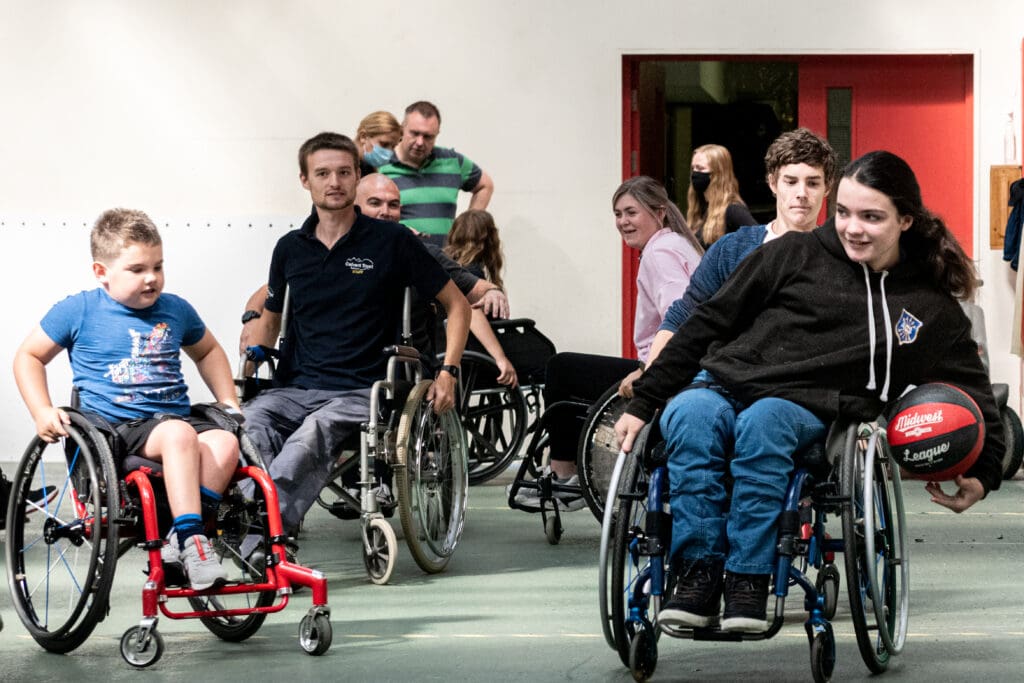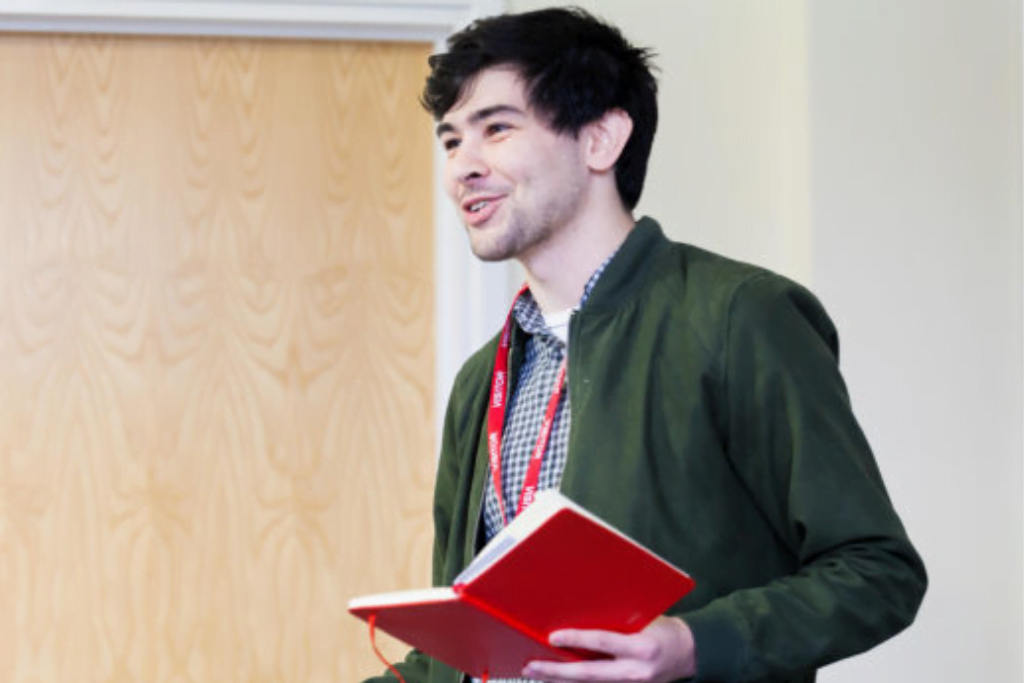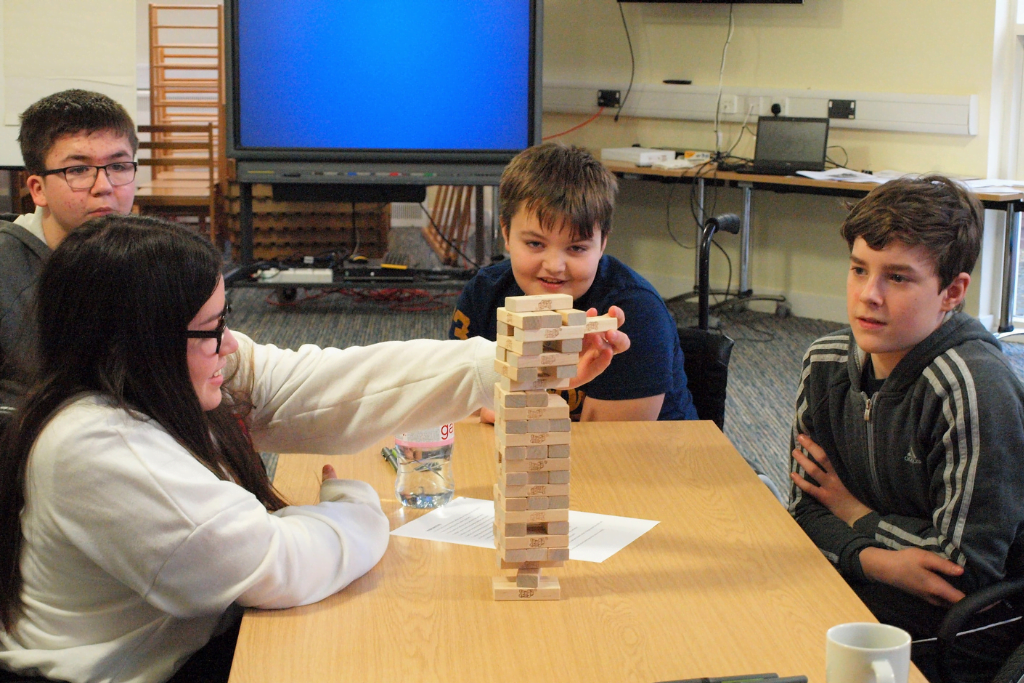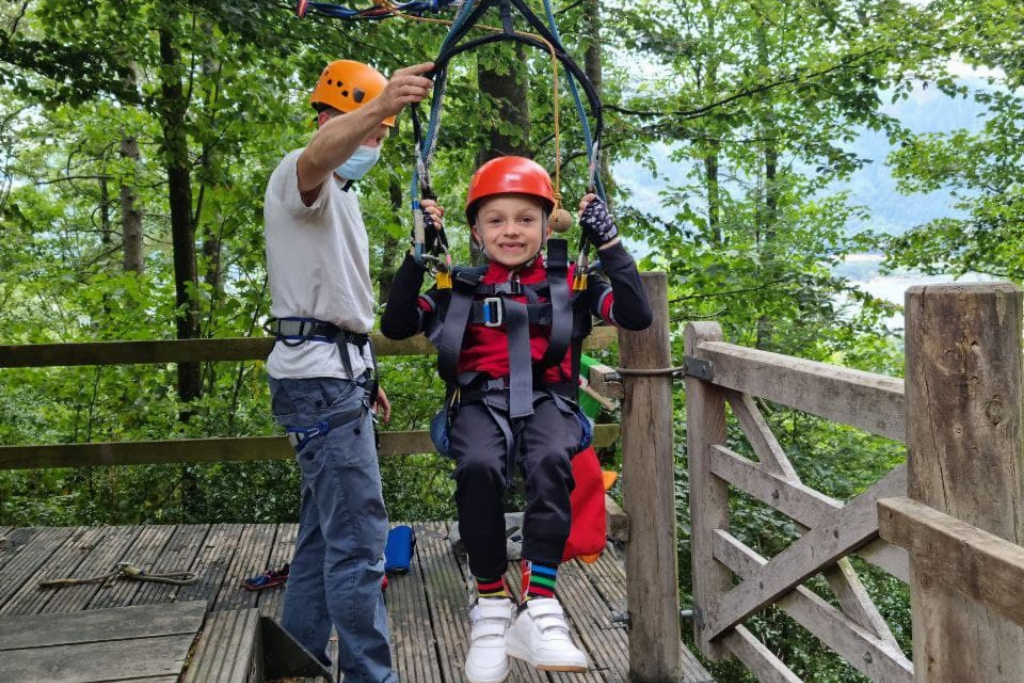Accessing physical education
Why it is important to make PE inclusive for all and how can this toolkit help you?
The involvement of children and young people with a spinal cord injury in physical education and school sport is often one of the biggest hurdles to their inclusion in schools. It is, therefore, a particularly important area to focus on in preparing for and ensuring a student’s welcome back to school. This toolkit can support you to be an outstanding teacher. Listed below are strategies, resources and information on how to support inclusion in the gym and on the fields.

Photo: Andrew Hobbs Photography
Ofsted considers inclusion to be a key element of an outstanding school and outstanding teaching:
Schools cannot be judged as ‘outstanding’ for overall effectiveness unless they have ‘outstanding’ teaching. Part of the descriptor for outstanding teaching includes:
“almost all pupils currently on roll in the school, including disabled pupils, those who have special educational needs and those for whom the pupil premium provides support, are making rapid and sustained progress”
School Inspection Handbook, Ofsted, January 2013
“When evaluating the quality of teaching in the school, inspectors will consider the extent to which teaching strategies, including setting appropriate homework, together with support and intervention, match individual needs.”
The Framework for School Inspection, January 2013
In the Framework, Ofsted also considers:
- The extent to which the education provided by the school meets the needs of the range of pupils at the school, and in particular the needs of disabled pupils and those who have special educational needs.
- The extent to which schools provide an inclusion environment which meets the needs of all pupils, irrespective of age, disability, gender reassignment, race, religion or belief, sex, or sexual orientation.
- How well disabled pupils and those who have special educational needs have achieved since joining the school
“When they do apparatus, I can’t do that so I feel left out so I do some walking. I remember one time I had to go in my standing frame, and they were doing apparatus, so instead of watching them do PE I had to do school work and felt like I’d been naughty. ”
Alison, 10
Young people’s Top 15 tips for a teacher to make a big difference to a spinal cord injured young person’s PE experience
- Ask me what I like to do in PE, both before and after the accident (and ask my parent too). Don’t be afraid to ask me for ideas on how I can be included
- Always make me feel involved and do not leave me left sat on the side-lines, feeling left out or excluded
- Try and do as many activities that I can do as possible – sports that can be adapted, like basketball or table tennis so I can take part just like the other pupils
- Do a normal PE lesson, but always adapt it so I can take part. Do it in such a way that it is not obvious and everyone in the class gets something out of it
- If you are doing a team sport or are working in a group make me a captain
- Be adventurous with your adaptations to an activity
- As my PE teacher, to talk to the school about what they can put in place to support me
- Do floor activities where everyone is on the same level as I am
- Do swimming pool games (this is good exercise for me)
- Think about the PE class coming to my local fitness suite with me
- Get able bodied children to play in chairs if possible (e.g. wheelchair basket ball) or get a local sports club to come in and do demonstrations or Back Up to speak to the school
- If I don’t want to get involved in the main activity, get me involved in other ways (e.g. scoring, refereeing, and setting up coaching drills) but don’t offer this as the only solution, include me as much as possible so I am equal to my peers
- Explore the possibility of having my physiotherapist involved in the planning of the PE lesson
- Make sure the other children are understanding about what I can and can’t do
- Don’t be afraid to try, if it doesn’t work we’ll do it differently next time
“My PE teacher made me do everything – they adapted everything. I’m not into sport – I didn’t have a choice! My teacher adapted it all so I had to take part. She was quite strict so she didn’t want me sitting on the side and not taking part.”
Julie, 18
Top 6 inclusion strategies for teachers
Supporting all children and young people to participate in PE or sport is reliant upon high-quality teaching and coaching and skills that teachers and coaches already practice.

The following ideas can help you in how to include all children and young people:
1. Speak to the young person first
Find out how they feel about taking part in PE and what they want to do. Include them in the planning of the lessons.
2. Inclusion Spectrum and STEP principles
Any activity can be adapted and modified using the Inclusion Spectrum and STEP tools. The Inclusion Spectrum is an activity-centred approach to the inclusion of young people of all abilities in physical activity. Inclusion can be achieved by changing the way in which the activity is presented.
The Inclusion Spectrum provides physical activity/sport coordinators with different methods of supporting inclusion. By delivering activities differently we can balance different needs within the group and so help to maximise the potential of all young people. The STEP principles (Space, Task, Equipment and People) can be used to support the Inclusion Spectrum ‘Change to Include’ approach. Changes in the way the activity is delivered can be made in one or more of the STEP areas. See the Sainsbury’s inclusive PE training for information on the Inclusion Spectrum and STEP principles.
S stands for SPACE
- What is the effect of the size of play area chosen?
- Can you change surface so it is suitable for a wheelchair?
- Is the facility accessible including toilets and changing rooms?
- Decrease targets and distances to make things easier
- Working in zones enables people of similar ability to be matched
- Is there room to move around?
- Can you use a tackle free zone?
T stands for TASK
- Demonstrations/Communication – ease understanding
- Adapt rules for the whole group or for individuals
- Adapt the task for some young people so that they can use adapted equipment
- Adapt a game to use zones so everyone can play
- Choose a sport/tasks that is accessible to all e.g. Avoid high jump or run parallel with another accessible activity.
- Rule changes:
- Tennis- two bounces
- Basketball- two touches of wheels before having to bounce ball
- Table tennis- Other player plays seated
E stands for EQUIPMENT
- Size – a larger ball is easier to hit and to receive
- Size – can you make the length of a handle shorter/longer on a racket / bat?
- Size – can you reduce the height of targets? e.g. lower badminton net
- Is there sport specific specialist equipment? e.g. wheelchair football attachment
- Does the wheelchair have anti-tip fitted?
P stands for PEOPLE
- Group Dynamics – working in pairs and small groups
- Vary Groupings – use mixed ability groupings and similar pairings – not the same every lesson
- Select team roles carefully – to challenge but not frustrate
- Let them try – never assume they can’t do it and work with the young people on adaptations – what works and what doesn’t
- As a coach your position is important for people to hear and see
Examples of applying the STEP principle:
Orienteering
S: Create a course that does not include grass or extremely uneven surfaces, ensure than the overall distance of course is appropriate
T: Remains unchanged
E: Ensure than all punches are at an accessible height and location
P: Can you put participants in pairs, can support with gradients if required
Tennis
S: Reduce size of court to ensure more opportunities to practice various shots
T: Two bounces before ball has to be returned
E: Remains unchanged
P: Remains unchanged
Football
S: A tackle free zone eg. A wing
T: Remains unchanged
E: Wheelchair football attachment for front of chair
P: Remains unchanged
STEP information has kindly been provided by WheelPower – British Wheelchair Sport. For further information please contact them via info@wheelpower.org.uk or 01296 395995.

3. Training for PE teachers
Consider specialist courses for teaching PE for young disabled people, though consider if the course also covers teaching and adapting activities in mainstream schools rather than focusing on teaching in special schools.
- The Sainsbury’s Active Kids for All training is designed to help teachers to embed inclusive practice in their planning, delivery and assessment within the PE curriculum. Providing teachers with a clearer understanding of the needs of all pupils and to be able to use teaching strategies to ensure all pupils are engaged and make good progress, both of which are essential in outstanding teaching. To book your free training place visit Sainsbury’s Active Kids for All.
- The Youth Sports Trust initiative, Top SportsAbility is a free online resource for schools and offers practical advice to teachers, learning support staff, and other sports practitioners. It consists of video clips and downloadable content showing ideas and strategies around the inclusion of young disabled people in physical activity.
- Aspire InstructAbility is a multi award winning bespoke programme designed to engage disabled people in the fitness industry as gym instructors and gym users. InstructAbility was set up by Aspire, the spinal cord injury charity, and is funded by Sport England. The scheme, delivered in partnership with YMCAfit, provides disabled people with free, accessible fitness industry training and qualifications followed by a voluntary industry work placement.
- Paradance UK offers and runs courses for people who want to provide their own inclusive dance or Para Dance Sports classes.
- Link with your local SEN school, as they may be able to provide advice in adapting sporting activities, support you to run an adapted lesson and provide equipment. Contact the SEN team in your local authority to find your local special schools.
- The NSPCC Safeguarding deaf and disabled children in sport. The resource includes guidance and information as well as information on a range of disability types and implications for coaching.
“[Inclusive] coaching sessions are actually about the expert experience of a coach to know how to adapt a session to include disabled children. Inclusion requires a lot of creativity in the coach because each child is different and unique, regardless of whether or not they have a spinal cord injury. It’s not something that is written in black and white. Knowing how to adapt an activity is where coaching skills come in.”
George Timotheou, Sports Development Manager, Aspire
4. Specialist equipment and adjustments
These organisations can help with mobility equipment which enable spinal cord injured young people to access PE more confidently and give greater independence at home, at school and at play:
Action for Kids
Cauldwell Children
Children Today
Cash4Kids
Dan Maskell Trust
Family Fund
Get Kids Going
READY Charity
Lords Taverners
DTD Charity
Variety Club
Whizz Kids
Examples of specialist equipment includes lower netball nets, a low table tennis table (or a table where the roll bar is removed / further back), balloon balls, larger tennis rackets or those adapted with a special strap and bean bags.
Swimming: If a school has a swimming pool or organising swimming activities, consider suitable changing facilities and use of a hoist for entering and leaving the pool. The temperature of the pool may also need to be increased.
- General information on ‘P scales’ for students with Special Educational Needs can be found here
- The statutory programme of study for PE at Key Stages 3 and 4, and the attainment target level descriptions are accessible here
“My physiotherapist would often come into school, one week it was during a PE lesson. I suggested incorporating my physiotherapy sessions with the PE lesson. The physiotherapist sent a monthly fitness programme to the school, which linked to the PE curriculum and I got updated on my progress. When the physiotherapist couldn’t come to the lesson, friends, other students and PE support staff would help me with the exercises, which I really liked. I preferred to do some of the lesson separately in the gym on my own for privacy, but other people may have preferred to have it incorporated into the lesson, that’s why it is so important to ask the person involved. I was getting exercise, doing physical activity, still doing the curriculum and it was helping me with rehab too, it was a great option for me.”
Ben, 18
5. Identify opportunities for young people with a spinal cord injury to excel in PE and other outdoor activities
There are a number of organisations and schemes designed to motivate and support disabled young people to participate and develop their athleticism and physical activity. There is an appendix of disability sport organisations at the end of this document.

The national bodies of disabled people in sport and physical activity work with those in the relevant sectors to provide inclusive opportunities as well as encouraging more disabled people to take part in sport: English Federation of Disablity Sport, Disability Sport Wales, Scottish Disability Sport, Disability Sports Northern Ireland
- WheelPower – British Wheelchair Sport: Pro-active referrals can be made for children and young people to find local disability sports groups and organisations.
- Active Partnerships are networks of local agencies committed to working together to increase participation in sport and physical activity.
- Partners include National Governing Bodies of Sport and their clubs, school sport partnerships, local authorities, sport and leisure facilities, primary care trusts and many other sport and non-sporting organisations. Find your local Active Partnership here
- Parasport has been designed to inspire, educate, inform and signpost disabled people, and those interested in disability sport, to high quality opportunities and disability-friendly sports club in your area.
- Inaccessibility of sports pitches
- Attitudes and comments from PE teachers
- One student was told he was a ‘hazard’ when playing rugby and was encouraged to do something else.
- Being segregated as a group of disabled people
- One school decided to put all the disabled children in one race on Sports Day, creating a stigmatizing experience
- Activities that are not adequately adapted
- Full exclusion from the subject of PE
- Unsuitability of local sports facilities
- Lack of money to participate in sports outside school
- Primary and secondary school sport competition formats
- British Wheelchair Basketball
- Different Speeds for Different Needs: How to teach sports to every kid. Book by Gary Barber.
- Top Sportsability: offers young disabled people a progressive sporting pathway with a range of appropriate PE and sporting opportunities, incorporating tailored resources and equipment to their needs
- PE Central: US website with information on adapted PE activities
- Adapted Physical Education National Standards: US web site with good links to adapted PE activities and information
- International Federation of Adapted Physical Activity: organisation for individuals and organisations interested in adapted physical activity
- Disability and Youth Sport a book on the theory of sport for young disabled people
- Doing Sport Differently – A guide to exercise and fitness for people living with disability or health conditions: Disability Rights UK
- Understanding the barriers to participation in sport
- Young Disabled People and Sport (summary): a Sport England/University of York report on the uptake, motivation, and barriers to participation in sport, as identified by disabled young people
- Aspire’s training: InstructAbility
- Active Kids for All Inclusive PE training
- Including pupils with SEN and/or disabilities in primary physical education: TDA training toolkit
- Including students with SEN and/or disabilities in secondary physical education: TDA training manual
- Paradance UK
- NSPCC Safeguarding deaf and disabled children in sport
6. Inclusive PE Case Studies
The Activity Alliance works to make active lives possible by enabling organisations to support disabled individuals to be and stay active.
A 2008 report of the school lives and experiences of children and young people with spinal cord injuries showed that nearly 2/3 of those interviewed in the study had experienced problems, sidelining or exclusion from PE classes.
Unsurprisingly, a 2001 Sport England/University of York report also found that in nearly all contexts, participation in sport by disabled young people was lower than for the overall population of young people. Those with a mobility-or self-care-related disability were the least likely to participate in sports, and this lack of involvement was not due to lack of motivation or desire to play; rather it was down to external barriers.
Some of the experiences of exclusion and identified barriers from these two reports included:
*Knight, A, Petrie, P, Potts, P and Zuurmond, M. (2008) The school lives of children and young people with a spinal cord injury. Thomas Coram Research Unit, Institute of Education, University of London. Report to the Back-Up Trust.
“ When they do apparatus, I can’t do that so I feel left out so I do some walking. I remember one time I had to go in my standing frame, and they were doing apparatus, so instead of watching them do PE I had to do school work and felt like I’d been naughty.”
Alison, 10
Resources
Reports and Research
Training
Contact
If you’d like learn more about how we can support children and young people with a spinal cord injury, register your interest here and the team will get back to you shortly or give them a call on 020 8875 1805.


